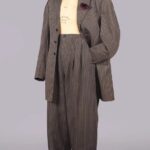10 Collectibles NOT Worth Collecting Anymore
Terry Kovel was interviewed for this article that appeared in the March 15, 2012 issue of The Bottom Line/Personal publication. “Collecting is fun, but it is a perilous investment if you choose the wrong collectibles. Here are 10 once-popular collectibles that are now worth much less than people imagine…”





